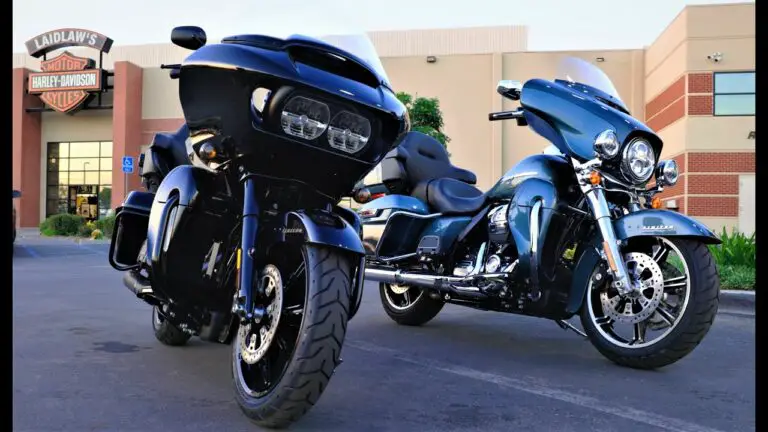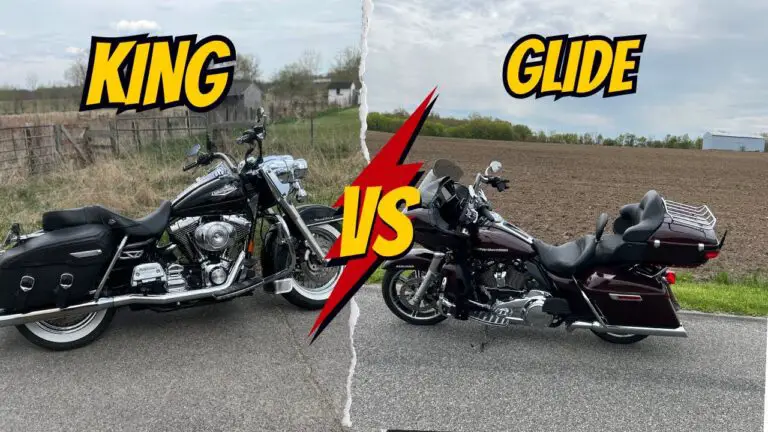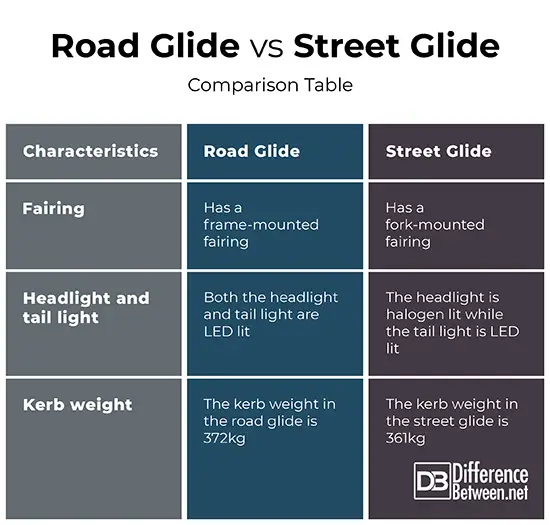The Fat Bob and Fat Boy are both popular Harley-Davidson models, distinguished by their unique style and riding dynamics. The Fat Bob features a more aggressive, performance-oriented design, while the Fat Boy offers a classic, iconic look with its solid-disc wheels.
Harley-Davidson fans often find themselves comparing the Fat Bob and Fat Boy, two muscular stalwarts from the iconic American manufacturer. Known for their robust appearances and commanding presence on the road, each model caters to a specific rider’s style and preference.
The Fat Bob leaps ahead with its bold, dynamic stance and a predilection for spirited riding, thanks to its inverted forks and dual disc front brakes. On the other hand, the Fat Boy garners admiration with its nostalgic aesthetics, made famous by its prominence in the movie “Terminator 2: Judgment Day. ” It charms riders who desire a relaxed cruising experience rooted in tradition. Both bikes showcase Harley’s V-Twin engines, delivering the rumble and torque enthusiasts crave, yet they offer distinct experiences that reflect their design philosophies and intended audience. Whether favoring the modern edge of the Fat Bob or the timeless silhouette of the Fat Boy, riders are promised an authentic chunk of Harley-Davidson’s legendary motorcycle culture.
Introduction To The Harley Rivals
Introduction to the Harley Rivals – Fat Bob and Fat Boy represent the spirit of adventure and the thrill of the open road. These two iconic bikes from Harley-Davidson stand out with their unique designs and powerful performances. Each bike carries a distinct style and heritage that speaks to riders worldwide. Let’s ride into the details and discover the differences and histories of these mechanical beasts.
Overview Of Fat Bob
The Fat Bob shines with its aggressive looks and muscular stance. Its signature LED headlights and chunky tires are ready for anything. Featuring a high-performance suspension and robust engine options, it packs a punch that appeals to the bold.
| Feature | Description |
|---|---|
| Style | Aggressive, urban |
| Performance | Powerful, responsive |
| Ride Quality | Smooth with high-performance suspension |
Overview Of Fat Boy
On the other side, the Fat Boy is a true icon. It boasts a steamroller stance with solid disc wheels. A favorite of Hollywood, the Fat Boy offers a classic ride with a modern edge. Its V-Twin engine is all about smooth yet commanding power.
- Classic Style: Solid disc wheels, iconic design
- Performance: V-Twin engine for smooth power delivery
- Ride Comfort: Balanced and easy to handle
Historical Development And Brand Legacy
Harley-Davidson has a history enriched with innovation and community. Fat Bob and Fat Boy are more than just bikes; they carry a legacy. Born from a culture of freedom, they stand for the American dream on two wheels. Each model’s evolution over the years tells a tale of passion for design and engineering.
- Fat Bob started turning heads in 2008 with its definitive style.
- Fat Boy gained fame from its starring role in 1991’s ‘Terminator 2’.
- Both bikes have evolved, embracing tech and comfort upgrades.

Credit: m.youtube.com
Comparative Analysis: Aesthetics And Design
When discussing the iconic Harley-Davidson models, the Fat Bob and Fat Boy often come into the spotlight. They both boast unique aesthetics that set them apart. This section delves into the world of these two motorcycles, looking at how they differ in looks, comfort, and personalization. Riders cherish both for their distinctive style and road presence. Let’s explore what makes each one stand out.
Exterior And Styling Differences
The Fat Bob and Fat Boy offer different visual appeals. The Fat Bob stands out with its aggressive and muscular styling. It boasts a chunky front tire paired with an eye-catching LED headlight. The Fat Boy, on the other hand, shines with its iconic solid disc wheels, termed ‘Lakester’. Both bikes showcase the Harley-Davidson legacy but with unique twists.
- Fat Bob: LED Headlamp, Aggressive Tires, Dual Exhausts.
- Fat Boy: Lakester Wheels, Sleek Chrome, Satin-Chrome Finish.
Ergonomics And Comfort
Comfort is crucial, and here, design serves a purpose. The Fat Boy offers a relaxed riding position with floorboards and a wide handlebar. Its seat is designed to hug the rider, offering support on long rides. The Fat Bob’s ergonomics lean into a more forward position, with mid-mounted foot controls for an engaging ride.
| Model | Riding Position | Seat Design |
|---|---|---|
| Fat Bob | Forward | Sculpted |
| Fat Boy | Relaxed | Supportive |
Customization And Accessories
Personal touches make a Harley unique. Customization is at the heart of the ownership experience. The Fat Boy is often seen with bags, windshields, and chrome enhancements. Conversely, the Fat Bob with its modern flair, invites bold graphics and performance upgrades like exhausts and air intakes.
- Enhance aesthetics with custom paint or decals.
- Boost performance with aftermarket exhausts.
- Improve comfort with seats and handlebars fittings.
Performance Face-off
Heads turn when the sound of a Harley thunders through the street. But which one reigns supreme? In this performance face-off, we rev up two iconic beasts: Fat Bob and Fat Boy.
These Harleys pack muscle, style, and a ride smooth enough to conquer any road. We examine each bike’s guts and glory, from heart-thumping engines to handling and safety features. Which one will roll out as the ultimate road champion?
Engine Specifications And Power
Fat Bob dances with a powerful Milwaukee-Eight 114 engine. Fat Boy, not far behind, boasts a similar Milwaukee-Eight 107 or 114 option. Both deliver hefty torque for a thrilling punch at the light.
| Model | Engine | Displacement | Horsepower | Torque |
|---|---|---|---|---|
| Fat Bob | Milwaukee-Eight 114 | 1868 cc | 94 HP | 155 Nm |
| Fat Boy | Milwaukee-Eight 107/114 | 1745/1868 cc | 86/94 HP | 145/155 Nm |
Ride Quality And Handling
Fat Bob sets itself apart with agility. Its inverted front forks and dual disc front brakes speak control and precision. Fat Boy shines on long rides, its solid-cast wheels slice through air, and the soft suspension absorbs bumps.
- Fat Bob: Agile and responsive handling
- Fat Boy: Comfortable and steady on highways
Braking System And Safety Features
Both models incorporate ABS for a grip that won’t quit. Fat Bob’s dual front brakes assure stopping power, while Fat Boy’s beefy tires paired with the brakes yield stability. These cruisers are equipped with Harley Davidson’s Reflex Defensive Rider Systems (RDRS), for a safer journey under your command.
- ABS across both models
- Enhanced handling with RDRS features
- Fat Bob: Dual disc front brakes
- Fat Boy: Sturdy tires for confident braking

Credit: blackgoldhd.com
Ownership Experience
The ownership experience of a motorcycle goes far beyond the initial thrill of riding it off the showroom floor. Both the Fat Bob and Fat Boy offer riders a distinctive presence on the road, but what does life look like living with either of these two-wheeled icons? This section delves into what owners can expect in terms of maintenance and reliability, costs, resale value, and the intangible yet invaluable rider community and culture impact.
Maintenance And Reliability
Reliability is key in choosing a motorcycle that fits your lifestyle. Long-time riders of the Harley-Davidson Fat Bob and Fat Boy can attest to the dependability that comes with these models.
- Regular service keeps them running smoothly.
- Oil changes, tire inspections, and brake checks are essential.
- Adhering to the maintenance schedule in the owner’s manual is a must.
- Many owners find self-maintenance rewarding and cost-effective.
Cost Of Ownership And Resale Value
While the purchase price is often the headline figure, the true cost of ownership extends to include fuel, insurance, and maintenance costs.
| Expense | Fat Bob | Fat Boy |
|---|---|---|
| Insurance | Varies by location and rider | Varies by location and rider |
| Maintenance | Yearly checks advised | Yearly checks advised |
| Resale Value | Generally strong | Generally strong |
Both bikes tend to hold their value well, thanks to the storied brand and loyal following.
Rider Community And Culture Impact
The right bike not only offers a mode of transportation but also an entrance into a community. The Harley-Davidson name comes with a vast and inclusive rider community.
- Fat Bob and Fat Boy riders share a sense of brotherhood.
- Harley owners often receive invitations to exclusive events.
- Both models have a cultural impact, featured in various media.
- Merchandise and accessories allow riders to showcase their pride.
Becoming a Fat Bob or Fat Boy owner means joining a legendary lineage of motorcyclists.

Credit: www.youtube.com
Frequently Asked Questions On Fat Bob Vs Fat Boy
What’s The Difference In A Fat Boy And A Fat Bob?
The Fat Boy and Fat Bob are both Harley-Davidson motorcycles. The Fat Boy features a solid-cast disc wheel design, while the Fat Bob has a more aggressive stance with dual headlamps and a Tommy Gun exhaust. Their styling and ride experiences differ.
What Makes A Fat Bob A Fat Bob?
The Fat Bob stands out with its distinctive wide profile, chunky tires, and a robust, muscular appearance. Its signature features include forward foot controls, a squared-off headlamp, and a fat front tire, epitomizing the bold, classic cruiser style.
Why Is The Harley Fat Boy So Popular?
The Harley Fat Boy’s popularity stems from its iconic design, strong V-twin engine, and cultural status from film appearances like “Terminator 2. ” Its comfortable ride and reputation for quality also contribute to its enduring appeal among motorcycle enthusiasts.
Is A Fat Bob A Real Harley?
Yes, the Fat Bob is a genuine model manufactured by Harley-Davidson, known for its muscular style and performance.
Conclusion
Navigating the choice between Harley’s Fat Bob and Fat Boy can be exhilarating. Each ride promises its own brand of thrill, tailored to the rider’s preferences. Consider your style, comfort, and performance needs when making the decision. Ultimately, whether you opt for the muscular Fat Bob or the iconic Fat Boy, the open road awaits your unique journey.




